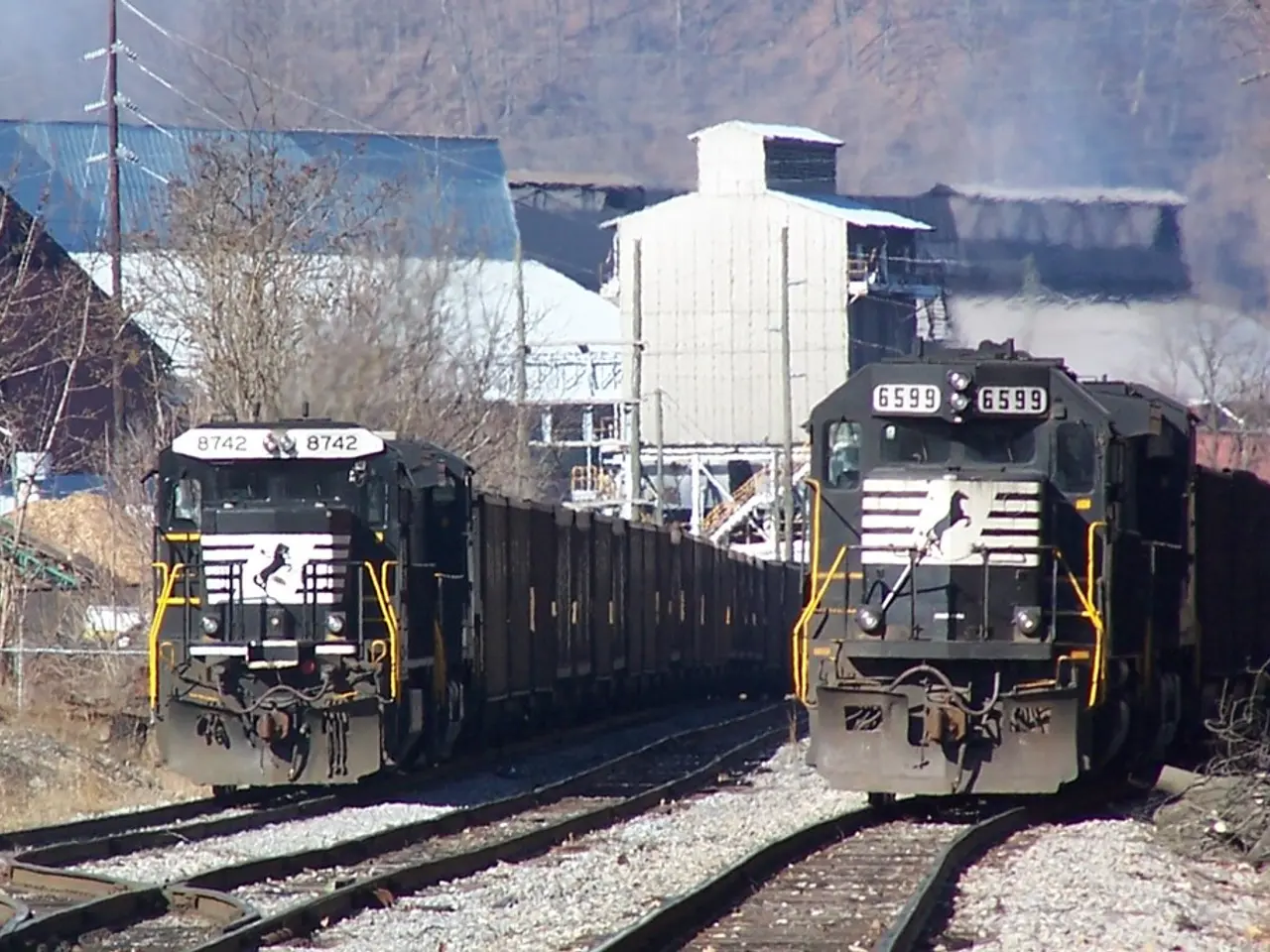Prioritization of rail freight, aiming to unravel transportation gridlocks
In the midst of ongoing concerns about supply chain disruptions and lingering delays caused by the Covid-19 pandemic, the Freights First Act was reintroduced in Congress on July 25, 2025, by Rep. Eric Burlison (R-MO). This legislation aims to alleviate congestion near ports and rail yards by removing the federal law that gives Amtrak passenger trains preference over freight trains on shared tracks within 50 miles of ports or rail yards for five years after enactment.
The Freights First Act was first introduced in 2022 by U.S. Rep. Dusty Johnson (R-SD), but did not make it out of committee. This bill, if passed, would alter the current arrangement that has been in place since Amtrak was created, which often creates unnecessary bottlenecks near ports and major rail yards.
The core provision of the Freights First Act is to ensure that intercity and commuter rail passenger transportation provided by or for Amtrak shall not have preference over freight transportation. For five years after enactment, Amtrak will not have preference over freight transportation in using a rail line, junction, or crossing if they are located within 50 miles of a port or rail yard.
As of late July 2025, the bill is newly reintroduced and has not yet passed out of committee or the full Congress. There is no indication it was included in the recent major legislation signed into law in July 2025 (the "One Big Beautiful Bill"), which focused on other infrastructure and economic issues and passed both chambers earlier that month.
Analysts have recently pointed out that tariffs and trade disruption could lead to potential supply chain kinks that could cause congestion in the U.S. The Freights First Act, which aims to remove government-backed preference given to Amtrak passenger service over freight railroads, could play a crucial role in mitigating such issues.
However, Amtrak has stated in its complaint that the passenger-preference obligation was consistent with the commitments made by industry leaders at the time of Amtrak's inception to continue to prioritize passenger trains. Union Pacific Railroad, in response, stated that Congress created Amtrak to relieve railroads from the financial burdens of serving passengers, not to promote passenger service at the expense of freight service.
As the Freights First Act moves forward in Congress, it remains to be seen how this legislation will impact the balance between passenger and freight rail services in the U.S. and contribute to a more efficient and resilient supply chain.
References: 1. Congress.gov 2. Transport Topics 3. Roll Call 4. Surface Transportation Board
The debate on the Freights First Act, reintroduced in July 2025, centers around its potential influence on the supply chain. If passed, this legislation could address congestion issues near ports and rail yards caused by Amtrak passenger trains receiving preference over freight trains on shared tracks. On a different note, unexpected weather conditions or changes in sports schedules could also potentially disrupt supply chain operations, demonstrating the multifaceted challenges faced by logistics managers.







